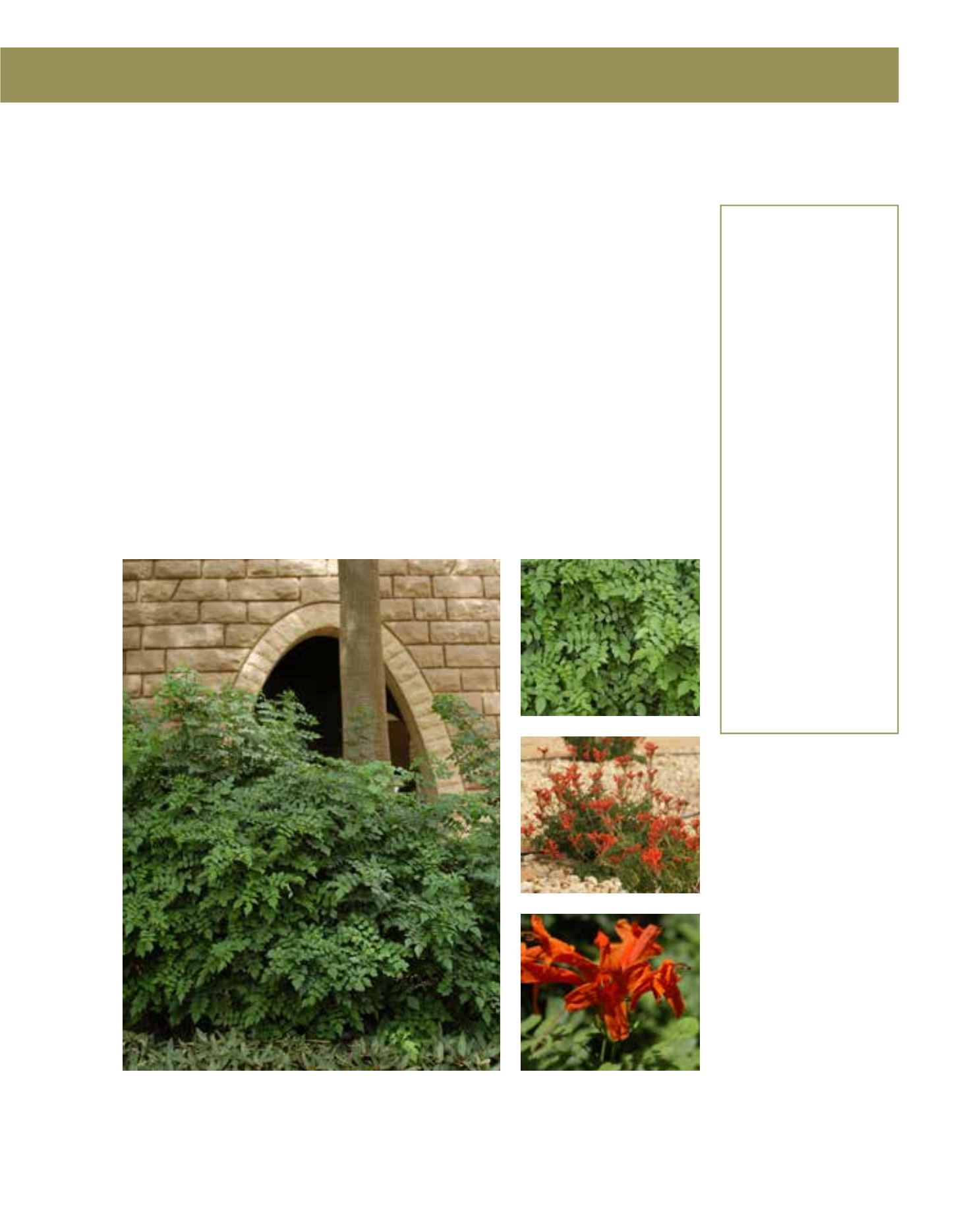

GENERAL
Origin
:
Mediterranean,
sub-tropical
Vigour
:
fast growing
Humidity
:
semi-arid, semi-
humid, very
humid
Propagation :
layer, cuttings
Maintenance :
moderate
CONDITIONS
Urban climate :
resistant
Dessication :
vulnerable
Stagnant water :
vulnerable
Irrigation
:
medium
Salinity/ppm :
moderate (2000
ppm)
Hardiness
:
-3°C
SHAPE
Type
:
climbers
Height
:
3 m-7 m
Spread
:
3 m-6 m
Foliage
:
semi-evergreen
FLOWER
Colour
:
deep orange
Size
:
15 cm
Period
:
June - November
FRUIT
Type of fruit :
capsule
Fruit size
:
18 cm
Toxicity
:
inedible
This evergreen scrambler from South Africa and Mozambique grows long branches that need
support on a trellis or a wall. In this way, it may reach up to 7 metres in height and some 6 metres
in width. It does not climb by itself, so it requires some maintenance to fix the woody twigs pro-
perly. Frequent clipping even allows it to be used as a hedge. However, the effort is worth it, since
the Cape Honeysuckle flowers profusely in bright scarlet over a long period from late autumn to
early summer. Sometimes, yellow-flowering varieties are offered, such as ‘Aurea’. The foliage is
evergreen in Arriyadh, but some leaves may be shed where frosts occur. They are pinnately com-
pound, dark-green and shiny above. The total length varies between 8 and 15 cm, but the foliage
somehow seems feathery, owing to the many leaflets with their serrate edges. Frequent irrigation
and fertiliser are rewarded with vigorous growth and larger, healthy leaves. Established plants
endure drought in deep, fertile and well-drained soil. Cape Honeysuckles do well in partial or full
sun, and resist desert heat. They resist fumes, but should be sprinkled occasionally in dusty sites
in order to reveal the lush foliage. Pruning is best done in late winter. Old stems should be cut
back entirely to encourage new growth. Otherwise, the base will become unsightly, with nothing
but leggy branches. Underplanting with Plumbago auriculata is also possible. Propagation is very
easy by layering, separating suckers or planting hardwood cuttings in late winter.
296
Tecomaria capensis,
Bignoniaceae
Cape Honeysuckle
















